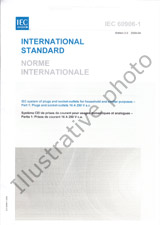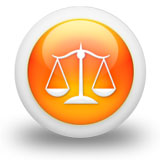We need your consent to use the individual data so that you can see information about your interests, among other things. Click "OK" to give your consent.

IEC/TR 61850-90-4-ed.2.0
Communication networks and systems for power utility automation - Part 90-4: Network engineering guidelines
Translate name
STANDARD published on 25.5.2020
The information about the standard:
Designation standards: IEC/TR 61850-90-4-ed.2.0
Publication date standards: 25.5.2020
SKU: NS-994562
Approximate weight : 300 g (0.66 lbs)
Country: International technical standard
Category: Technical standards IEC
The category - similar standards:
Annotation of standard text IEC/TR 61850-90-4-ed.2.0 :
IEC TR 61850-90-4:2020(E), which is a Technical Report, is intended for an audience familiar with network communication and/or IEC 61850-based systems and particularly for substation protection and control equipment vendors, network equipment vendors and system integrators. This document focuses on engineering a local area network limited to the requirements of IEC 61850-based substation automation. It outlines the advantages and disadvantages of different approaches to network topology, redundancy, clock synchronization, etc. so that the network designer can make educated decisions. In addition, this document outlines possible improvements to both substation automation and networking equipment. This document addresses data transfer over the network in IEC 61850, such as transmitting tripping commands for protection via GOOSE messages, and in particular the multicast data transfer of large volumes of sampled values (SV) from merging units (MUs). This document considers seamless redundancy to increase the network availability under failure conditions and the high precision clock synchronization that is central to the process bus and synchrophasor operation. This document is not intended as a tutorial on networking or on IEC 61850. Rather, it references and summarizes standards and publications to assist the engineers. Many publications discuss the Ethernet technology but do not address the networks in terms of substation automation. Therefore, many technologies and options have been ignored, since they were not considered relevant for a future-proof substation automation network design. This document does not address network-based security, which is the subject of IEC 62351 and IEC 62443. This document does not address technologies for wide area networks; these are covered by IEC TR 61850-90-12. Guidelines for communication outside of the substation that uses exclusively the routable Internet Protocol have been published, especially in documents IEC TR 61850-90-1 (substation to substation), IEC TR 61850-90-2 (substation to control center) and IEC TR 61850-90-5 (synchrophasor transmission). However, data flows used in substation-to-substation communication, or substation-to-control centre communication such as R-GOOSE and R-SV are covered when they transit over Ethernet links within the substation. This document does not dispense the responsible system integrator from an analysis of the actual application configuration, which is the base for a dependable system This second edition cancels and replaces the first edition published in 2013. This edition constitutes a technical revision. This edition includes the following significant technical changes with respect to the previous edition: • New object model for bridges and clocks based on UML autogeneration. • An example of SCL configuration with a topology • Extensions to the time distribution and clock • Extension of the testing
We recommend:
Updating of laws
Do you want to be sure about the validity of used regulations?
We offer you a solution so that you could use valid and updated legislative regulations.
Would you like to get more information? Look at this page.



 Cookies
Cookies
